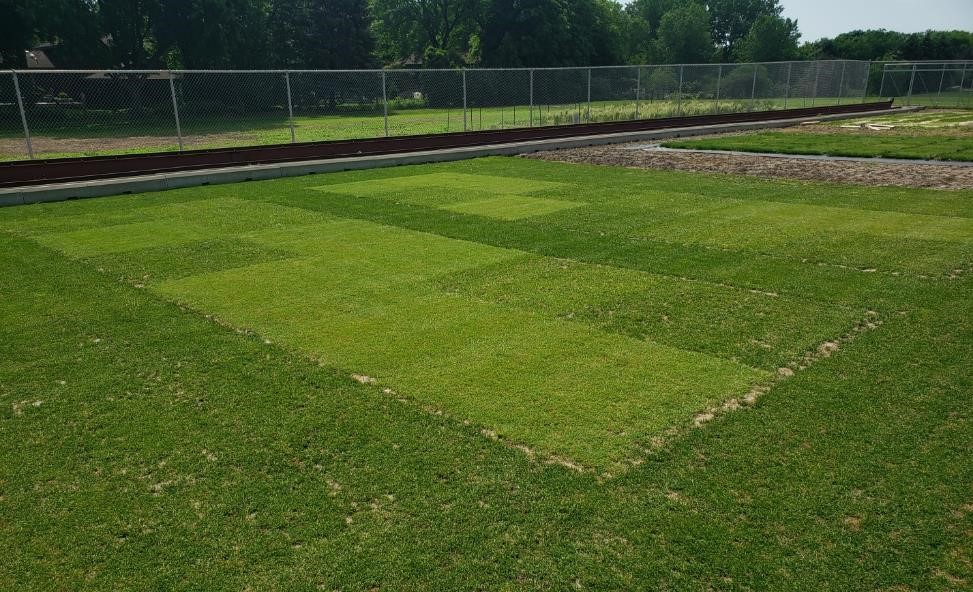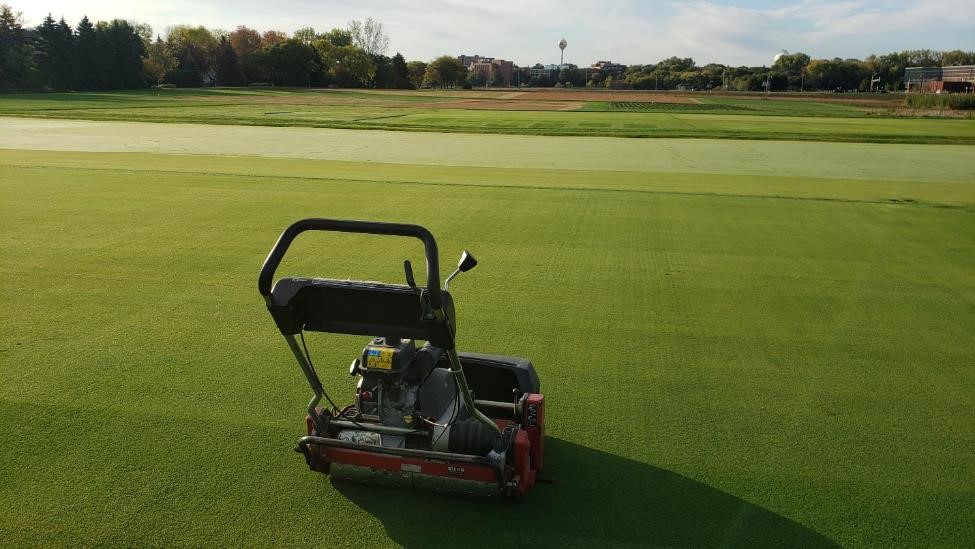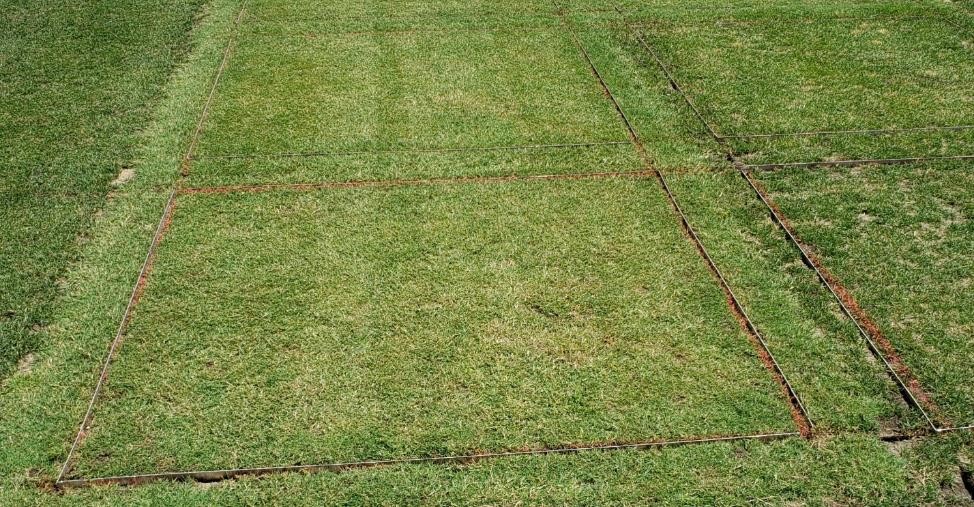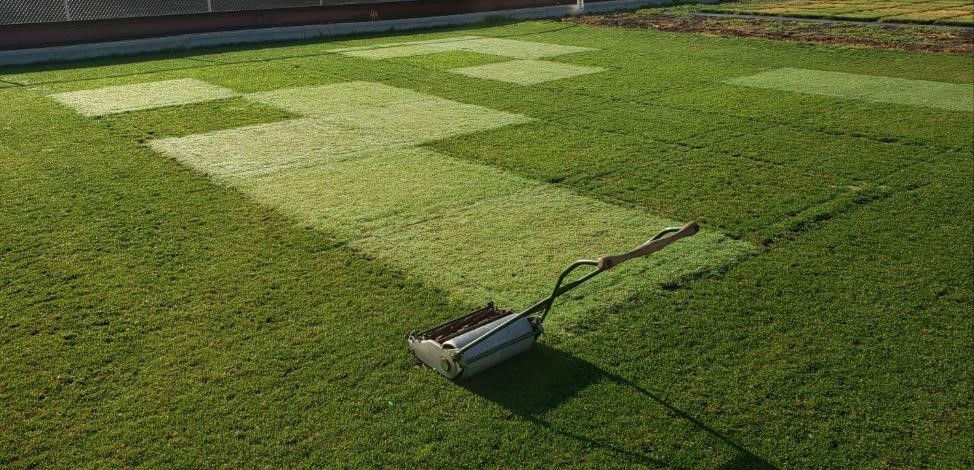By Gary Deters
Like most turfgrass areas, a high percentage of our research plots need to be mowed consistently. Our creeping bentgrass research golf greens are cut at 0.125” and the task requires a special mower and reel setup. Many plots are cut at 2.5” to 3.5” with a push or riding mower, similar to what is used by a typical homeowner. So, with all the research plots and mowers we have, you might think we have everything we need to get the job done. In most cases that is true, but for a new trial conducted by members of the turf group, we had a bit of a problem.
The research plot (Figure 1) consists of creeping bentgrass and Kentucky bluegrass to be mowed at 0.5” and the researchers separated all twenty-four plots with aluminum barriers to prohibit the irrigation applied on one plot from spreading to the adjacent plot. The problem with the barriers is it made it almost impossible to mow the turf with the gas-powered walk mower (Figure 2) we typically use to mow turf at that low of a height. The mower was simply too big and heavy for precision mowing in this case and the barriers (Figure 3) could really damage the mower reel if it hit the aluminum repeatedly, which was unavoidable.
The problem was solved with a mower that had not been used in years, a Ransomes Certes 16” hand mower from the late 1950s (Figure 4). I wasn’t sure if it would work because the mower needs to be set up precisely in order to cut well. With a visual test I could see the reel and bedknife were dull and rusted. To make matters worse, with a simple check on the cutting unit, the reel and bedknife were too far apart so the unit needed to be adjusted to cut properly.
I filed the reel and bedknife the best I could to shave off the rust and slowly adjusted the reel and bedknife and used paper to test the scissors-like cut. It took several minutes of adjusting, but eventually I got the clean cut that was needed. The next step was to adjust the height of cut to 0.5”, which also took several minutes. At that moment I believed it was ready for the plot, but the question remained, will it work?
With easy maneuvering brought on by self-powered control, the trial run with the mower after the adjustment was an instant success. I could tell immediately after a few passes it would work for us. We used the Ransomes three days a week to mow the plot. Since it is not gas-powered, this mower is quiet, which is a bonus considering there is a noise ordinance where our plots are located.
Later in the summer, we grew in a second plot of turf consisting of the same species from the first trial. Again, we used the Ransomes as the primary cutting unit as the plots were separated by aluminum barriers.
Thanks to being open-minded to trying something new with an old mower and maybe a little luck, we were successfully able to keep up with the mowing and solve a potential problem.



